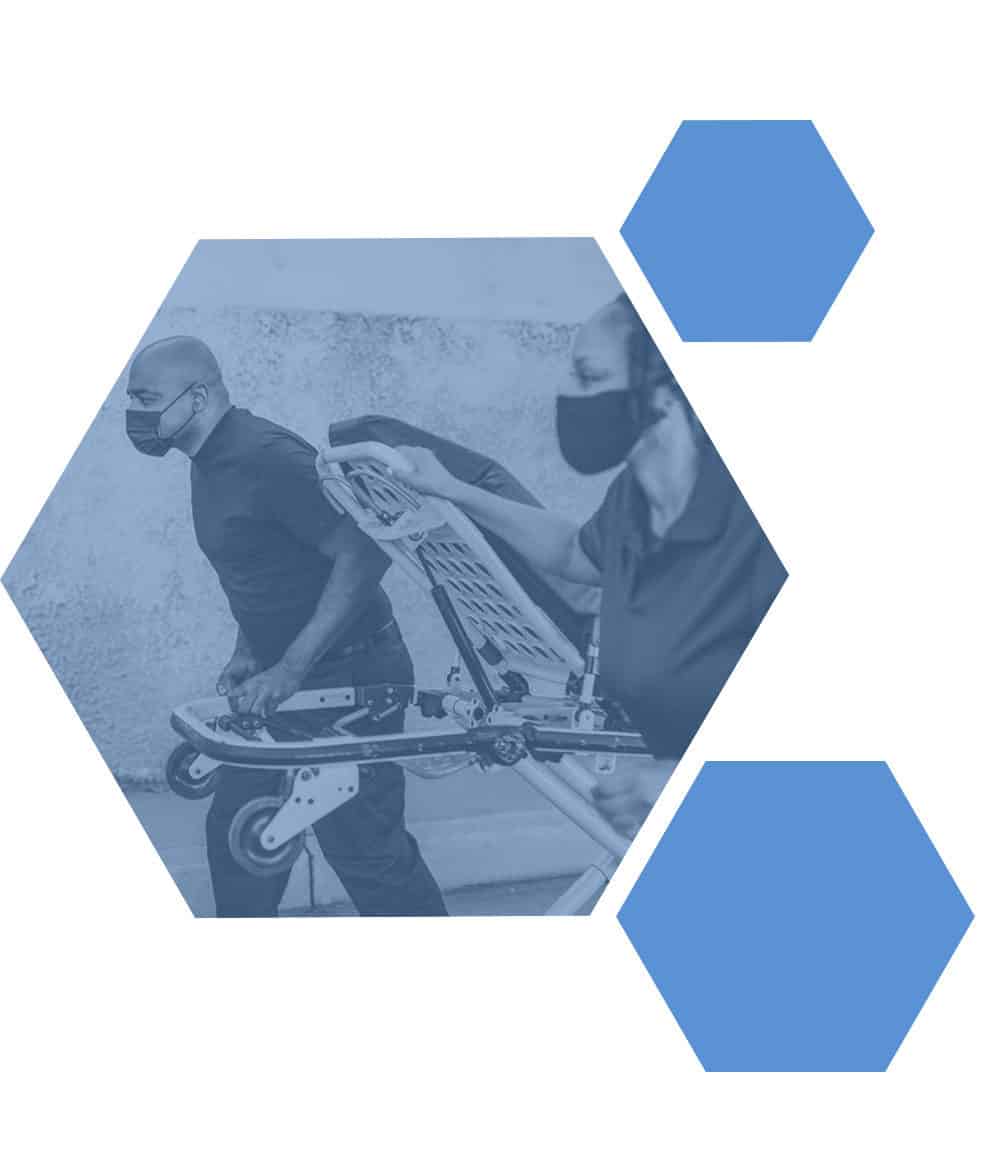Community Responder Program Staffing

Community Responder Program Staffing
The agency that leads the community responder program is typically in charge of its staffing. This means that staff selection, training, and advancement is led by one of three entities depending on how a jurisdiction sets up its program: (1) a service provider organization, (2) an existing government agency, or (3) a newly created government agency. The number and qualifications of people hired for the response team should be tailored to the community’s distinct programming needs and constraints. Most existing community responder programs deploy teams of two to four staff members in the field. These responders usually have varying levels of experience and expertise ranging from nurses to behavioral health specialists to social workers and peer support specialists trained in crisis de-escalation, intervention, and more.
Tips for Staffing Community Responder Programs
1. Identify a lead agency
The agency where community responder programs are housed can determine training opportunities and access to resources like funding and data. It can also inform how community responders access information and connect people to needed social services. Therefore, the community stakeholder group should consider these and other factors, such as desired pay, benefits, retirement investments, and development of a trained workforce when considering a lead agency and identifying a staffing structure.
2. Use information gathered by assessments and feedback to inform staffing needs
The type of staff who are needed for each community responder team will depend on the results of the community’s needs assessment, feedback from community members during the community engagement process, and the planned design of the program/types of calls the team will address. (See sections on collaboration and needs assessment for more information.)
Read More
Depending on the community needs and the types of calls the community responders will support, additional staff may be needed as part of the team. For example, if the response team is going to respond to drug overdoses and acute intoxication calls, having medical support will be important (e.g., community paramedics, nurses, etc.)
3. Provide ongoing training for community responder teams
The lead agency should provide regular, comprehensive training to help community responders better support people in crisis or in need of assistance. Responders should receive ongoing team training on de-escalation techniques, trauma-informed care, harm reduction approaches, basic behavioral health and medical care information, and ways to coordinate with other first responders—particularly 911 call takers and dispatchers. Staff should also receive regular updates on available housing and homeless services as well as the list of community-based health providers that accept referrals from the team.
4. The lead agency should provide regular, comprehensive training to help community responders better support people in crisis or in need of assistance.
It is important for program and agency leaders to develop a plan to support staff wellness, particularly for community responders who will interact directly with clients since first responders can experience secondary trauma due to the nature of their work in the community. (See Safety Protocols and Wellness for more details.)
Resources
This brief highlights four key strategies to advance the work of peer support specialists, gleaned from interviews with peers who work with three Justice and Mental Health Collaboration Program grantees.
As interest in community responder programs grows across the country, one of the most crucial elements of establishing these programs is deciding who makes up the actual team of responders. While there is no set formula for determining staff members—as a program’s staffing model and structure will vary based upon which needs are most pressing for a local community—there are some common patterns among existing and successful programs. This explainer has answers to three frequently asked questions about staffing community responder teams.
During this webinar, staff from the Evanston Department of Parks and Recreation’s C.A.R.E. team and Oakton College spoke about the development and implementation of their program. Researchers and national experts also explained why workforce development programs are vital to the success of community responder programs and how this partnership is mutually beneficial to community colleges.
A key component to assembling a successful, tailored community responder program is deciding who should be on the response teams. This can include determining the number of staff, the most appropriate professions to hire, and which agency employs them. While there are a number of staffing options available, the city of Olympia, Washington’s Crisis Response Unit can offer one example of a leading program housed within an existing government agency.










